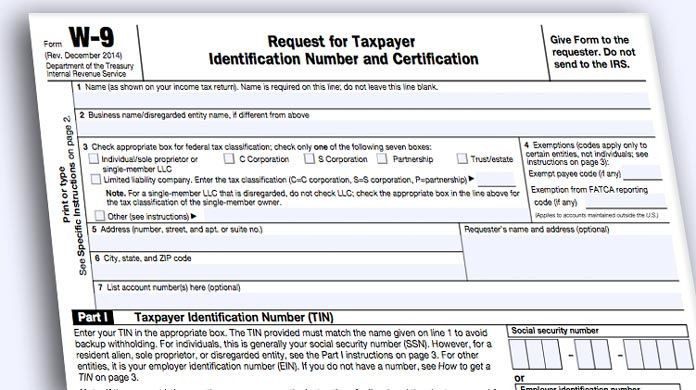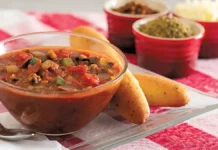
While the end of the year may signal a coming return to warmer weather and more patrons, it also signals something altogether less desirable for many – taxes. Whether you dread tax season or have a quality bookkeeping and payroll system on your side to make it simple, tax season is unavoidable.
More importantly, the end of the year is the ideal time to review your income, deductibles, and policies to ensure that you’re making the most out of every payment you make to the IRS. The following 5 year-end tax tips will help you plan your taxes so you can save as much as is possible.
1. Understand Your Deductibles and Maximize Them
As a restaurant owner-operator, tax deductibles are a valuable tool that you can use to reduce your liability. While you can likely qualify for more deductibles than listed here, you can use these as a starting point when reviewing your finances.
Food Costs – Most business owners know that you can deduct the cost of raw ingredients and pre-packaged foods, but you can also deduct frying oil, condiments, and similar, as well as wasted food, which you cannot sell. Most restaurant owners either keep a running report throughout the year (which is advisable) or complete a final inventory at the end of the year to determine how much food was used and how much was thrown away.
Labor Costs – Labor and employee costs are fully deductible providing they are reported to the IRS. Paying your wait staff and cooking crew is one of the largest expenses of running a restaurant, but most of those costs are fully deductible. Deductibles include employee salary, wages, bonuses, tips, sick leave, vacation pay, and health insurance. If you are unsure whether or not employees have reported all of their tips, consider asking your payroll provider for a reported tips report, where your employees sign off on tipped amounts, so that any liability for incorrect numbers falls on them and not on you.
Marketing – Any marketing costs, including direct advertising, online ads, brochures, billboard and sign rentals, promotional costs, sponsorships, and even website design, are deductible. However, coupons and discounts are not deductible from your taxes.
2. Review Tax Credits
Tax credits can be taken as a credit to directly offset tax or taken as a deduction depending on the credit, and they can be extremely valuable either way. It is important to handle your finances and your reporting with care to ensure that all of your deductibles are actually eligible.
Repair & Remodel – Safe harbor allows restaurants to deduct 75% of repair and remodel costs under section 162 of Revenue Procedure 2015-56, and capitalize the remaining 25% under section 263(a). It is crucial to separate repairs and remodels from new builds and any build that changes more than 20% of the building for a new use, because those types of construction do not qualify for the safe harbor.
Research & Development – If you’ve invested in research or development for ingredients, cooking methods, or other research relating to your restaurant, you could qualify for as much as a 20% tax credit.
FICA Tip Credit – You may be entitled to a 45(b) tax credit for part of the taxes paid on tips earned by employees. FICA Tip Credit amounts to any of the 7.65% tax paid on tip income in excess of Federal minimum wage, which you can claim as a tax credit using IRS form 8846. Your payroll provider should be able to supply you with a Tips in Excess report to calculate this credit.
3. Utilize Depreciation to Reduce Taxes
As a restaurant owner, you can deduct depreciation for machinery, fixtures, and equipment under sections 179, 167, or 168. Section 179 allows you to use the entire deductible the year of the purchase. This deduction is intended to allow small businesses including restaurant owners to purchase up to $500,000 of equipment for their business and reduce the costs immediately with all of the qualifying deductions.
4. Review Your Accounts and Books Before Filing
A full review of your accounts and bookkeeping can be pulled off with only a little planning and can save you a great deal in terms of frustration, IRS fines, and other issues. Even if you’ve already organized your financial books, you should still go over everything to ensure accuracy. For example, restaurant owners are required to file the IRS form 8027 – “Employer’s Annual Information Return of Tip Income and Allocated Tips” once per year. Reviewing your tip reports to ensure that everything is in order before doing so can ensure its accuracy.
It’s also important to review your balance sheet to check for assets that can be written off, prepaid expenses that can be deducted, and loans that can be used as deductions. If your business has intercompany accounts, you should review these to ensure that there are no discrepancies. Other areas where you may qualify for deductions include charitable contributions, bonuses or perks such as meals given to workers, property tax changes, retirement plans for employees, and investments held by your business.
5. Make Plans for the Upcoming Year
Making the right plans will ensure that next year’s taxes go as smoothly as possible, because you will have planned for and handled your accounting and bookkeeping with your taxes and deductions in mind throughout the year.
- Keep track of food costs as they are incurred and use a weekly inventory to track all food that is spoiled and wasted to maximize end of year deductions.
- Manage tip reporting, including receipts and daily accounting, to ensure that your 8027 form is accurate at the end of the year.
- Create a purchase plan to maximize your deductible expenditure for equipment and small wares (glassware, flatware, dinnerware, pots, pans, table items, bar supplies, utensils, cooking tools, storage supplies, service items, small appliances, etc.)
- Generate a weekly food and labor cost
- Create a financial profit & loss statement monthly
- Maintain a weekly inventory count
- Consider hiring from groups included under the Work Opportunity Tax Credit (WOTC) as it will allow you to qualify for a credit of up to 40% of the year-year wages for the individual.
Employing tipped workers presents unique tax challenges that most businesses simply don’t have to face. For that reason, you should hire a company that specializes in payroll for restaurants and other tipped industries, to ensure that your tip records are correct and your taxes are calculated correctly. BenefitMall offers a payroll solution designed to help restaurants maximize their savings and earnings with great payroll and reporting. We handle employee wages and tip reporting throughout the year, provide all of the reports you need to remain IRS compliant while claiming your maximum deductions, and take care of your data collection and organization to ensure that tax time is as simple as possible.
To learn more, visit www.benefitmall.com/restaurants.























